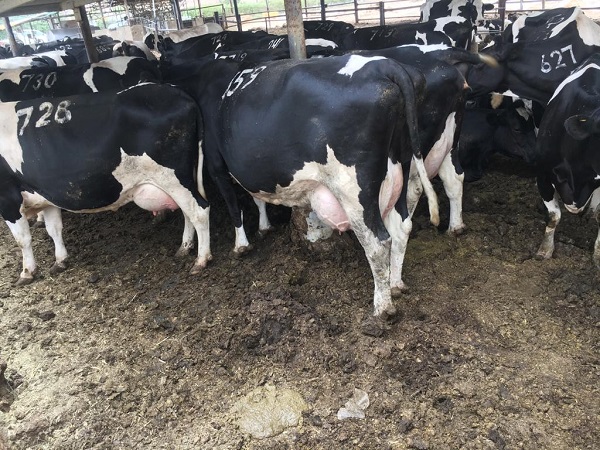

Foot rot is an infectious condition that causes swelling, heat and inflammation in the crevasse between cattle’s hooves, causing some of them to become lame in severe cases. Lame animals can lose weight quickly if they are reluctant to travel to feed and water. The microorganisms associated with foot rot mainly thrive in an environment without oxygen.
Causes
Foot rot is caused by the softening and thinning of the inter-digital skin by puncture, wounds or continuous exposure to damp conditions, which provides an entry point for infectious agents.
The most common is Fusobacterium necrophorum, an opportunistic pathogen which forms pus and induces the anaerobic environment for other bacteria by reducing oxygen in the tissues. When one of them enters into the skin, another comes along to perpetuate the infection. Reproduction of the bacteria destroys tissue which leads to the tissue death, facilitating the infection.
Many of these bacteria are normally found in faecal matter, so it is present all the time. But there must be a disposing factor such as a break in the skin between the feet of the cows. Cows can get cuts from such materials as rocks on the soft tissue between the hoof claws. Foot rot can be exacerbated during the rainy season as cattle may congregate under tree shades where they defecate or urinate making the tissue between toes tender. The toes are softened by moisture or damaged by acid in manure making the cows vulnerable,” he says.
Diagnosis
Once bacteria are introduced, they can manifest in about seven days. After a week, secreted toxins result into pain and sometimes lameness depending on the immunity response to inflammation and swelling.
One of the early signs of foot rot is that the affected animal begins to walk with a limp or become lame. Foot rot typically responds well to antibiotic treatment, but make sure it is foot rot.
Sometimes, foot rot is assumed when an animal suddenly becomes lame. While that could be true, it can also be due to fracture, snakebites, puncture, sores or some other infection. Therefore, the affected foot must be critically examined before administering antibiotics. Closer examination is normally done by lifting the foot with a rope to look at the bottom. Early diagnosis and quick treatment are key measures of cattle management. Animals should be inspected daily, if possible, certainly at not more than three-day intervals.
Management
One of the easiest ways to prevent foot rot is to manage the cattle in a clean, dry environment to minimise exposure to mud. Having proper housing for cattle is crucial.
Cattle on pasture should be rotated to avoid congregating in the same place every day. This limits manure build-up.
Zinc can also be used as feed additive to keep hooves healthier. Zinc is a trace mineral which is helpful in hoof-horn growth.
The ffected animals should be isolated until the infection resolves to prevent spread of bacteria in the environment. Animals that repeatedly get affected should also be culled.
Treatment
Several systematic products are labelled “for foot rot” including Nuflor, Excenel, Naxcel, Draxxin, LA-200 and penicillin can be administered be vets. Organisms that cause foot rot are very responsive to antibiotics.
Farmers should seek professional advice from veterinarians to determine the best pain management options.
Cleaning between the hoofs with a strip of gauze soaked with antibiotics clears away the build-up of dead tissue. But this generally works well if the infection is caught early.
For chronic infections, salvage procedures, such as hoof removal, can be adopted.
Recommendations
– Keep cattle yards clean and free of sharp objects like stones.
– Thoroughly clean pens and spread lime after cattle are removed.
– Ensure cattle yards have adequate drainage.
– Create a dry area for cattle to stand with mounds of soil, bedding or concrete slabs.
– Use concrete in areas where cattle congregate, such as around water fountains and feed bunks.
– Spread lime with 5 to 10 per cent added copper sulphate around watering units and feed bunks.
– Consider the use of walk-through foot baths.
– Provide good nutrition, including phosphorus, vitamins A and D, and zinc.
 Contact Jaguza Support
Contact Jaguza Support